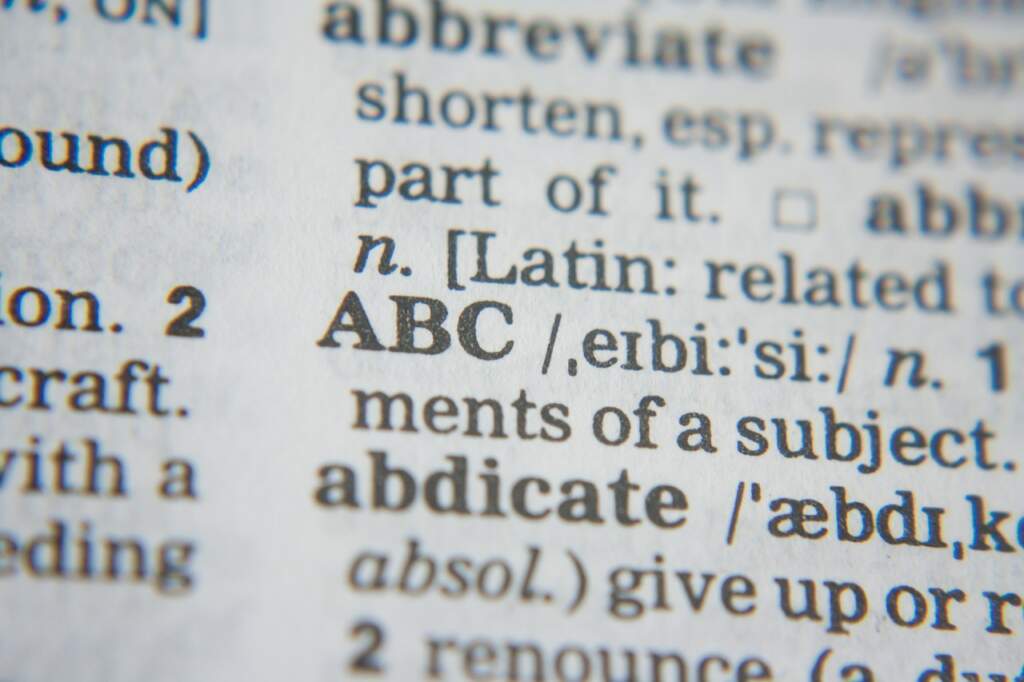
Introduction
Wondering how to teach vocabulary and make it relevant to your high school students? You’re not alone.
Whether they’re words that preface a text in the literature book, words that may prove challenging when reading an article, or words that link to the theme of a unit, teaching vocabulary is perhaps the most advantageous thing teachers can do for their students, helping them develop a rich vocabulary that greatly improves their listening, speaking, reading, and writing.
Why It’s Important
It’s important to understand why teaching vocabulary is important for students.
Aside from being linked to overall language comprehension, vocabulary knowledge helps students to express themselves more clearly and comprehend what they’re reading more deeply. Most of the time, when students encounter unfamiliar words in a text, they either skip it or gloss over it, not realizing the impact it has in limiting their understanding of the text.
However, by providing them with the knowledge and skills necessary to develop and foster their vocabulary, students can greatly improve their reading comprehension and writing proficiency, helping them become more confident in themselves.
Let’s explore some effective strategies on how to teach vocabulary that can help you help your students.
Strategies for Teaching Vocabulary
My approach towards how to teach vocabulary involves using the following strategies that I’ve learned and utilized over the years.
Contextual Learning
Contextual learning (aka context clues) is a great start on how to teach vocabulary. Rather than isolating words, teaching them in context gives students a deeper understanding of how these words are used and what they mean in different contexts.
Consider the word “ambitious“. Rather than telling students its definition (an earnest desire for some type of achievement or distinction), it’s better to introduce the word in a passage or scenario where a character actively demonstrates ambition. Through contextual learning, students not only learn the definition of ambition, but they also understand how it works.
A compliment to reading words in context is using articles, news reports, or video clips that reflect the word’s use in everyday life. Keeping with the same example of the word “ambition”, after students have watched an interview where the interviewee spoke about what makes them ambitious, students can discuss what responses help define the interviewee’s ambition.
Frayer Model Vocabulary Map
Another way of how to teach vocabulary involves students completing a Frayer Model Vocabulary Map (I love using these, by the way!). This graphic organizer has students write the word in the middle, and each of the outer squares serves a different purpose.
In my case, I have students label the four outer square as follows:
- Definition: students write the definition of the term that closely aligns with how it’s contextually used in the text
- Drawing: students draw a visual representation of the word’s definition (this also helps with dual coding)
- Examples: students write a list of three examples (e.g. real-world, literature, comics or manga, history, current events, film/TV/anime) that demonstrate the word in context
- Sentence: students practice using the word in an original sentence (either simple, compound, complex, or compound-complex)
Much like contextual learning, Frayer Model Vocabulary Maps give students an opportunity to internalize the word and its meaning.
Repetition and Practice
Repetition has its place in language learning, and it’s even more useful when wondering how to teach vocabulary.
When words are encountered multiple times over a period of time, students retain the words better. Exposure alone isn’t enough: practicing vocabulary in various contexts—like the two mentioned above—encourages active recall, strengthening students’ memory and long-term retention.
The way I integrate repetition when teaching vocabulary is through spaced repetition, which Kang (2016) notes as “Having the initial study and subsequent review or practice be spaced out over time”. In my case, I start with spaced repetition shortly after the lesson and activity (either contextual learning or Frayer Model Vocabulary Maps). After a few days, we revisit the words again either as a warm-up activity or exit ticket. A week later, we revisit the words again through a contextual activity.
The warm-ups and exit tickets engage students with actively practicing the terms even after the initial lesson is over. Rather than passively recalling the words, the goal is to make them actively use the words, which forces them to recall the word’s definition or its contextual application (depending on where the need is).
Furthermore, I assess students by giving them a brief ungraded quiz over the terms (I tell them it’ll be graded to avoid the usual “Why am I doing this if it’s not for a grade?” question). Assessing them in this manner also gives me an opportunity to see how well the class as a whole have retained the words.
These activities—and even activities like Power Writing—are useful with spaced repetition and practice.
Final Thoughts
When thinking of best ways on how to teach vocabulary, it’s important to remember that the words you choose must be meaningful and relevant.
If you’re using a text in a textbook, odds are there are emboldened words that you can use. If you plan on using articles—like Kelly Gallagher’s Article of the Week—you should preview the text first and identify at least 5 words you feel may interfere with student’s overall comprehension of the text.
How do you teach vocabulary in your classroom? Let me know in the comments!





Leave a Comment